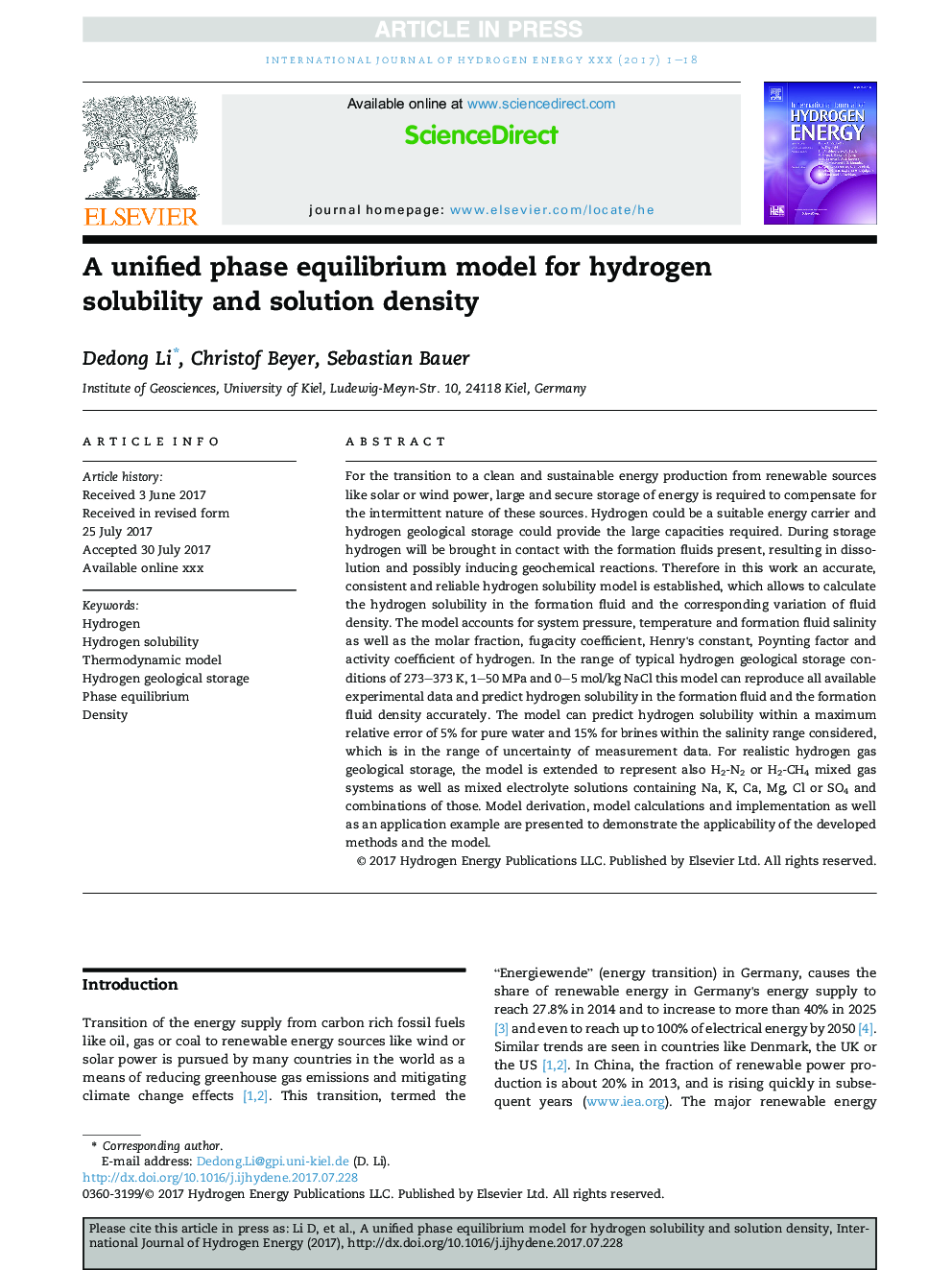| Article ID | Journal | Published Year | Pages | File Type |
|---|---|---|---|---|
| 7708801 | International Journal of Hydrogen Energy | 2018 | 18 Pages |
Abstract
For the transition to a clean and sustainable energy production from renewable sources like solar or wind power, large and secure storage of energy is required to compensate for the intermittent nature of these sources. Hydrogen could be a suitable energy carrier and hydrogen geological storage could provide the large capacities required. During storage hydrogen will be brought in contact with the formation fluids present, resulting in dissolution and possibly inducing geochemical reactions. Therefore in this work an accurate, consistent and reliable hydrogen solubility model is established, which allows to calculate the hydrogen solubility in the formation fluid and the corresponding variation of fluid density. The model accounts for system pressure, temperature and formation fluid salinity as well as the molar fraction, fugacity coefficient, Henry's constant, Poynting factor and activity coefficient of hydrogen. In the range of typical hydrogen geological storage conditions of 273-373Â K, 1-50Â MPa and 0-5Â mol/kg NaCl this model can reproduce all available experimental data and predict hydrogen solubility in the formation fluid and the formation fluid density accurately. The model can predict hydrogen solubility within a maximum relative error of 5% for pure water and 15% for brines within the salinity range considered, which is in the range of uncertainty of measurement data. For realistic hydrogen gas geological storage, the model is extended to represent also H2-N2 or H2-CH4 mixed gas systems as well as mixed electrolyte solutions containing Na, K, Ca, Mg, Cl or SO4 and combinations of those. Model derivation, model calculations and implementation as well as an application example are presented to demonstrate the applicability of the developed methods and the model.
Related Topics
Physical Sciences and Engineering
Chemistry
Electrochemistry
Authors
Dedong Li, Christof Beyer, Sebastian Bauer,
